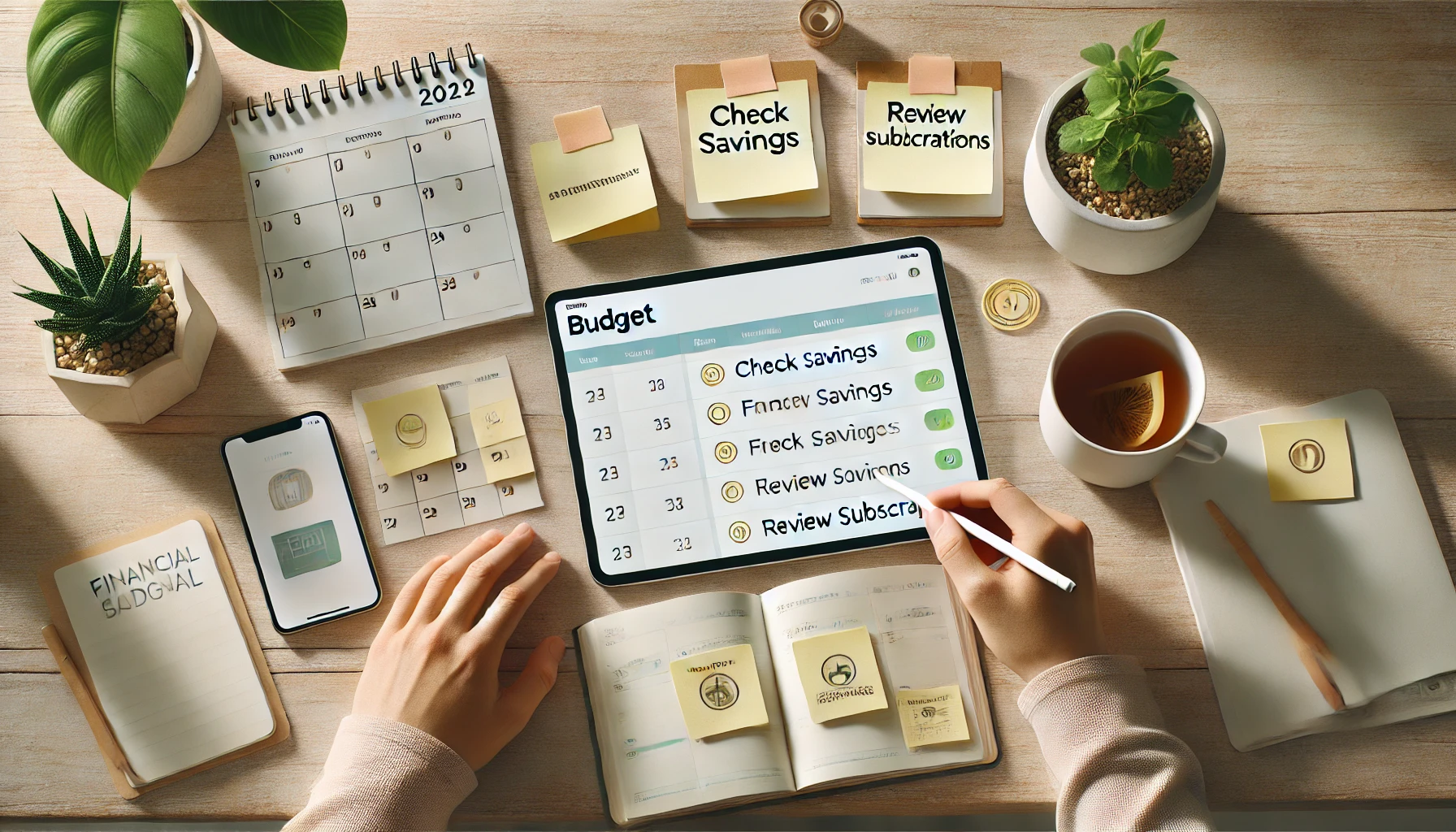Managing your money doesn’t have to be stressful or time-consuming. In fact, just like brushing your teeth or exercising, building a financial routine can make money management feel automatic, empowering, and even enjoyable.
The key is consistency—not perfection. With a solid routine in place, you’ll feel more in control, reduce money anxiety, and stay on track with your financial goals.
Here’s how to create a financial routine that actually works for your life.
Why a Financial Routine Matters
A routine helps you:
- Stay aware of where your money goes
- Avoid missed payments and overdrafts
- Build savings consistently
- Make better financial decisions
- Feel confident and in control
You don’t need to check your accounts daily. A smart routine just makes sure the most important things happen—on time, every time.
Step 1: Set a Weekly Money Check-In
Set aside 15–30 minutes once a week to:
- Review your spending
- Update your budget
- Pay any upcoming bills
- Transfer money to savings
- Reflect on progress toward your financial goals
Pick a time that works for you (Sunday evening, Friday morning, etc.) and put it on your calendar.
Pro tip: Pair it with something you enjoy—like coffee or a playlist—to make it a habit you look forward to.
Step 2: Automate Everything You CanAutomate your financial life as much as possible:
- Bills: Set up automatic payments to avoid late fees
- Savings: Auto-transfer a portion of your paycheck to savings
- Investments: Automate monthly contributions to your retirement or brokerage account
Automation removes temptation, eliminates forgetfulness, and builds consistency.
Step 3: Create a Monthly Budget Review
Once a month, sit down to:
- Compare your actual spending to your budget
- Look for areas where you overspent or underspent
- Adjust your budget for the next month based on changes (e.g., upcoming holidays or events)
This monthly review keeps your plan relevant and responsive.
Step 4: Review Financial Goals Quarterly
Every 3 months, take time to:
- Revisit your short- and long-term financial goals
- Check your progress (e.g., savings totals, debt payoff)
- Make changes based on life updates (new job, move, relationship, etc.)
- Celebrate milestones, no matter how small
Quarterly reviews give you the chance to course-correct and stay motivated.
Step 5: Use Tools That Work for You
Choose a system you’ll actually use. Options include:
- A budget notebook
- Spreadsheets (Excel or Google Sheets)
- Budgeting apps like YNAB, Mint, or EveryDollar
- Simple calendar reminders and to-do lists
You don’t need fancy tools—you need a method you’ll stick with.
Step 6: Schedule “Money Days” Each Month
Pick one day per month to handle deeper tasks:
- Reconcile your accounts
- Cancel unused subscriptions
- Organize receipts or track tax-related expenses
- Check your credit score or reports
- Update your net worth tracker
This is your time to organize, plan, and reset your finances.
Step 7: Keep It Simple and Realistic
Avoid creating a routine that feels like a second job. Start with:
✅ Weekly: 15-minute check-in
✅ Monthly: Budget review
✅ Quarterly: Goal check-up
✅ Yearly: Big-picture planning (taxes, insurance, investments)
Once these habits are in place, you can layer in more details if needed.
Step 8: Involve Your Partner (If You Have One)
If you share finances, schedule regular money dates:
- Review shared goals
- Talk about upcoming expenses
- Decide on big purchases together
- Divide financial tasks
Clear communication builds trust and prevents future problems.
Step 9: Make It Visual
Seeing your progress builds motivation. Try:
- A savings thermometer
- Debt payoff tracker
- Vision board with financial goals
- Monthly spending charts
Visual tools keep your goals top of mind and emotionally rewarding.
Step 10: Be Flexible, Not Rigid
Life changes—your financial routine should adapt too. If something in your system feels overwhelming or isn’t working:
- Simplify it
- Change the timing
- Try a new tool or app
- Ask for help or advice
Your financial routine is there to support you—not stress you out.
Final Thoughts: Small Habits, Big Impact
A financial routine doesn’t require hours every week or expert-level spreadsheets. It’s about creating a simple system that helps you show up for your money regularly.
Consistency beats complexity. Start small, stay committed, and let your routine grow with you.
